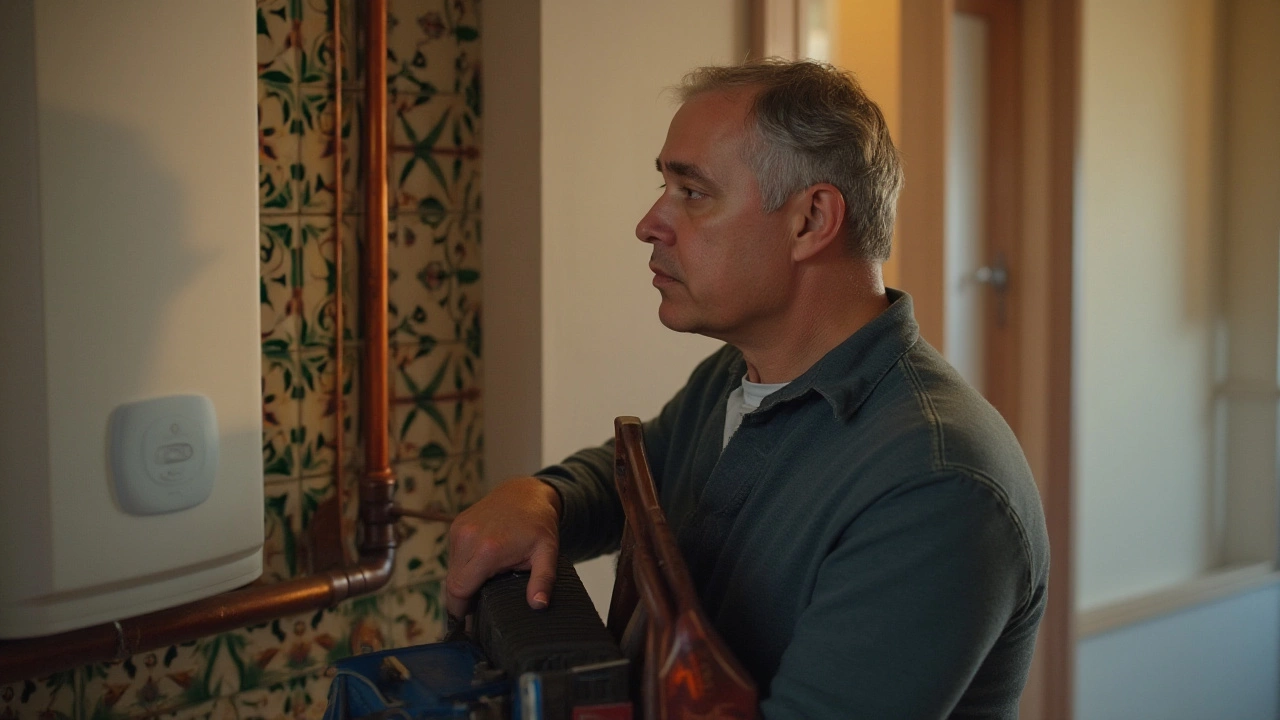Fix Water Heater: Quick Fixes for Common Problems
Cold water in the middle of a shower? Most water‑heater headaches aren’t a death sentence. With a few tools and a bit of know‑how, you can tackle the usual culprits before calling a pro.
Spot the Symptoms
First, figure out what’s wrong. Does the tank stay cold all day? Is there a strange rumble or water leak? Noting the exact symptom helps you choose the right fix and saves time.
Typical signs include:
- No hot water or lukewarm water.
- Strange noises – popping, cracking, or buzzing.
- Leaking from the base or around connections.
- Frequent resetting of the thermostat.
Basic DIY Repairs
1. Reset the thermostat. Many modern heaters have a reset button on the control panel. Turn the power off, press the button, and restore power. If the heater runs after that, the issue was a temporary overload.
2. Check the pilot light (gas models). A flickering or out‑of‑fire pilot means no heat. Follow the manufacturer’s steps: turn gas off, wait a minute, relight the pilot, then turn the gas back on.
3. Clean the sediment. Over time, minerals settle at the bottom of the tank and make the heater work harder. Turn off power or gas, attach a garden hose to the drain valve, and let the water run until it’s clear. Refill the tank and turn power back on.
4. Replace a bad heating element (electric models). After turning off electricity, remove the element’s access panel, test with a multimeter for continuity, and swap it out if it reads zero.
5. Inspect the anode rod. The rod prevents corrosion but wears out. Unscrew it from the top of the tank, check for heavy rust, and replace it if it’s depleted. This can add years to your heater’s life.
Always shut off the water supply and power or gas before you start any work. A pair of gloves and safety glasses go a long way.
If you’ve run through these steps and the water is still cold, the problem might be deeper – like a busted thermostat, faulty gas valve, or a cracked tank. Those issues usually need a professional’s touch.
When you call a repair service, tell them exactly what you’ve checked. It speeds up the diagnosis and can lower the cost. Local experts, like Glastonbury Appliance Repair Services, can replace parts, flush the system, or safely install a new heater if repair isn’t feasible.
Prevent future headaches by scheduling a maintenance check once a year. Flushing the tank, testing the pressure valve, and topping up the anode rod keep everything running smoothly.
Bottom line: most water‑heater problems have a simple fix you can do yourself, and a quick reset or cleaning often restores hot water. Keep these tips handy, and you’ll spend less time shivering and more time enjoying a warm shower.

Troubleshoot & Fix Your Water Heater's Tripping Issue
If your water heater keeps tripping, it can be both frustrating and inconvenient. This article guides you through the common causes and simple solutions to fix this issue. Learn about faulty elements, electrical connections, and practical safety tips to ensure your water heater operates efficiently and reliably. With a little know-how, you'll be able to troubleshoot these problems like a pro.

Effective Solutions for Fixing Your Cold Water Heater
Dealing with a water heater that's only giving out cold water can be frustrating, especially during the cooler months. This guide offers practical steps to diagnose and repair your water heater issues, ensuring warm showers return promptly. From checking power supply and settings to examining heating elements, this article covers everything you need to fix a cold water heater at home. You'll also find tips on maintenance to prevent future problems.